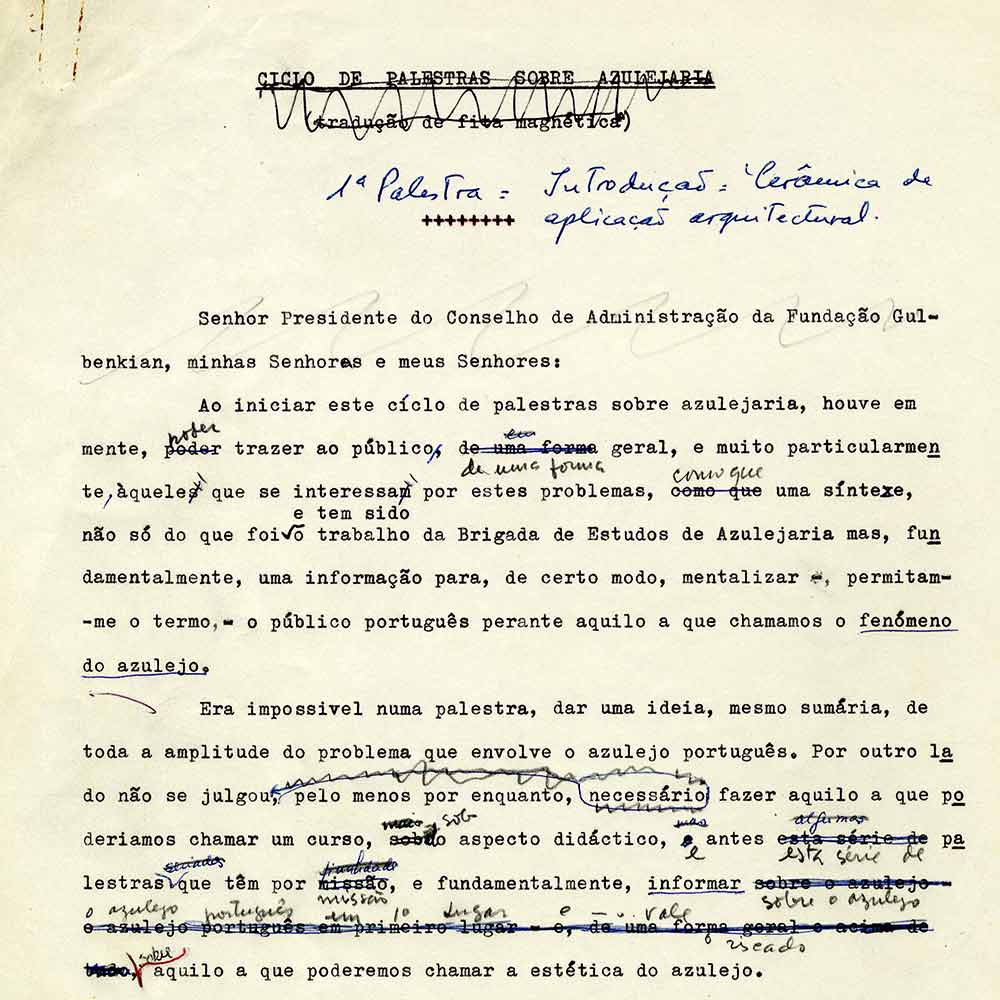
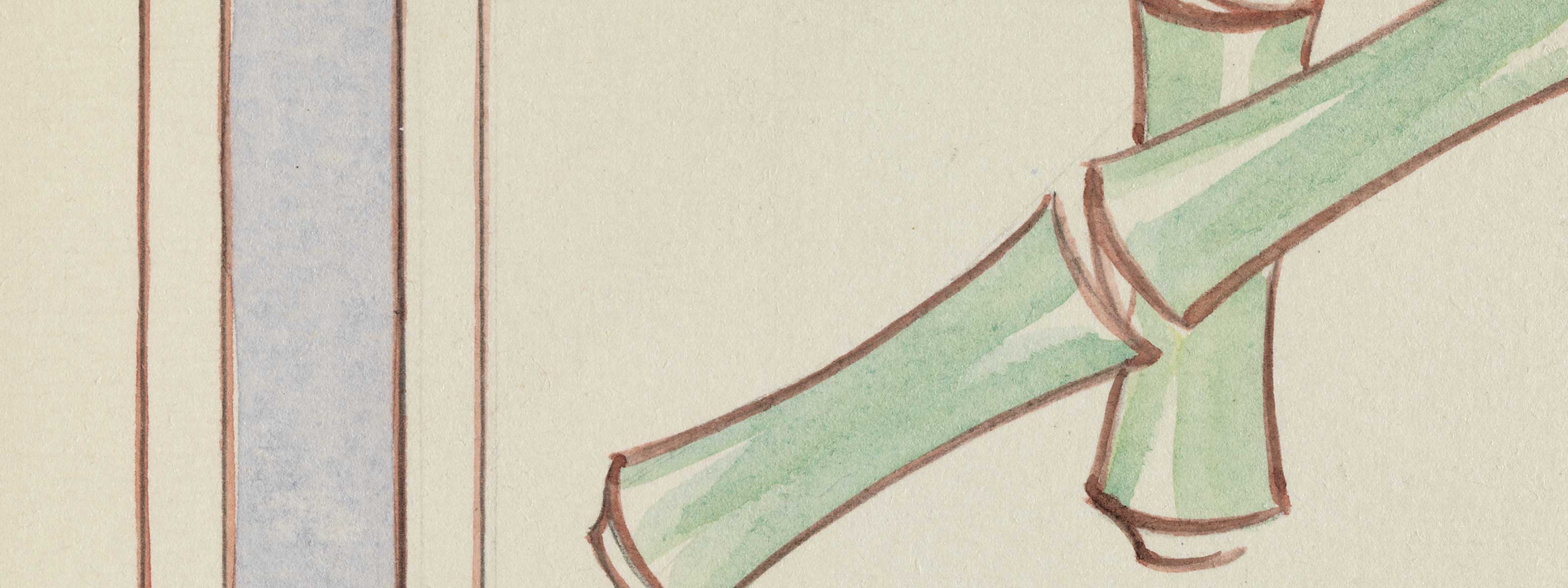
Series of lectures on tiles
Lectures given by João Miguel dos Santos Simões between January and March 1968, in the Foundation’s auditorium.


1. First lecture, 09-01-1968
1. First lecture, 09-01-1968
Concept of architectural decoration: ceramics as a structural and decorative material. The scale and rhythm. The materials and techniques: from clay to tile.
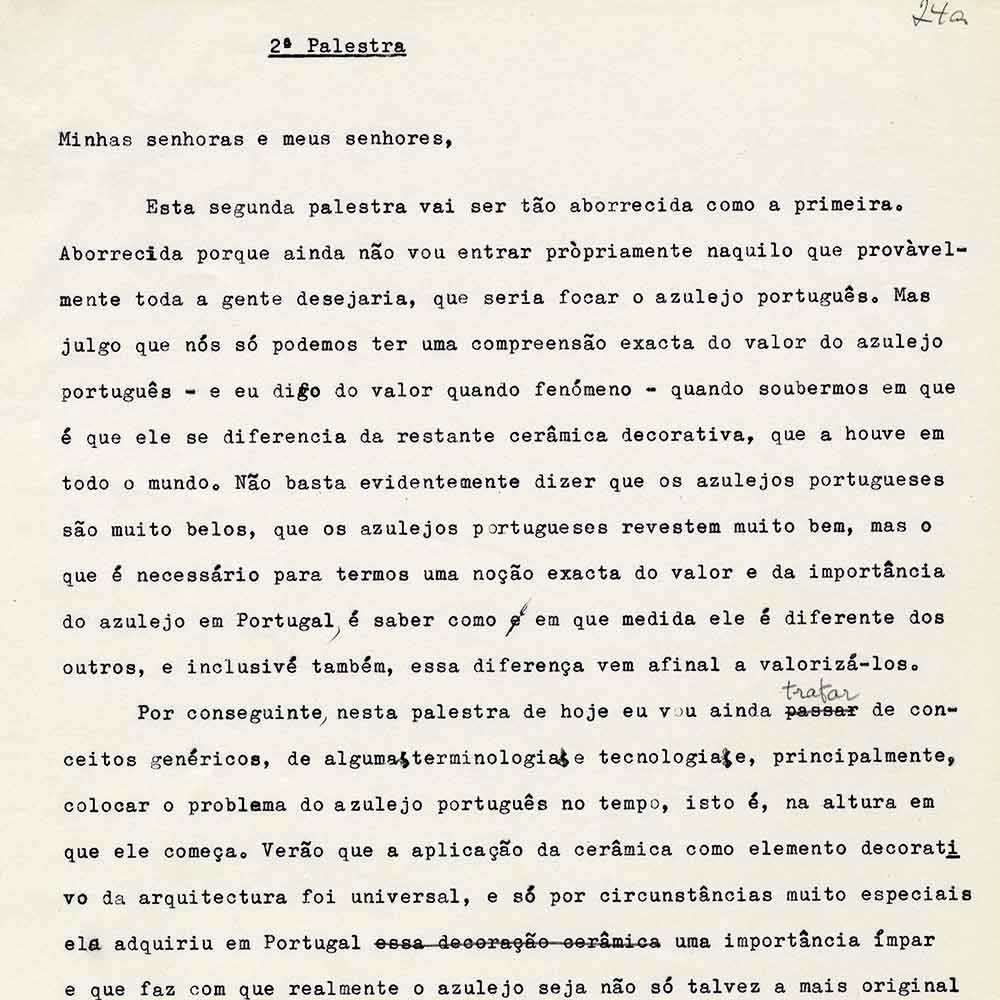

2. Second lecture, 16-01-1968
2. Second lecture, 16-01-1968
Ceramic applications in Islamicised countries. Techniques and developments. Migrations of artists and products: Mediterranean and Iberian Peninsula. Ceramic decoration in Renaissance Italy: Della Robias and Majolica.
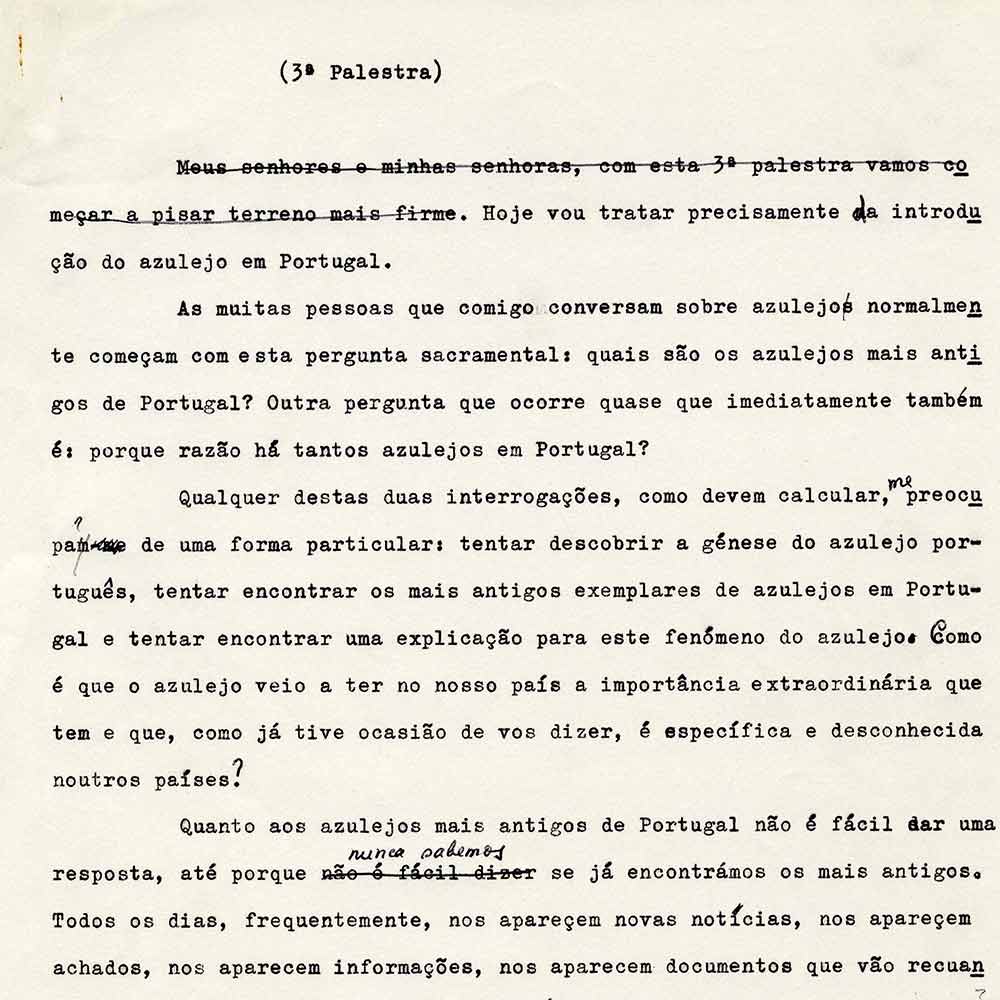

3. Third lecture, 23-01-1968
3. Third lecture, 23-01-1968
Introduction of the tile in Portugal. Andalusian and Levantine imports: characteristics and most important groups. Mudejar techniques and forms: Manuelina and Joanina eras. Differentiation of tile applications in Portugal. Flanders as a centre for the irradiation of artists and craftsmen: reflections on the Peninsula – the Pisano tiles. Talavera de la Reina and Sevilha. Independence of the Portuguese tile.


4. Fourth lecture, 30-01-1968
4. Fourth lecture, 30-01-1968
Portuguese tiles of the 17th century: processes, techniques, and ornamental themes – the so-called “azulejo de tapete”. The adaptability to Mannerist and pre-Baroque architecture.


5. Fifth lecture, 06-02-1968
5. Fifth lecture, 06-02-1968
Continuation of the 17th century. Differentiated applications: altar fronts, ornamental and figurative panels. The craft of the tiler-decorator. Role of religious orders and the Church as main consumers. Examples in the Portuguese Islands and Brazil.


6. Sixth lecture, 13-02-1968
6. Sixth lecture, 13-02-1968
Tile evolution in Northern Europe: the Netherlands and the Dutch influence on Portuguese tiles; the “blue and white”, causes and favour of this fashion.


7. Seventh lecture, 20-02-1968
7. Seventh lecture, 20-02-1968
Portuguese tiles in the first quarter of the 18th century: production centres. The “grande-pintura” and the masters of “brutesco” – Barco, Oliveira Bernardes […] The azulejo-talha binomial in Portuguese architecture.
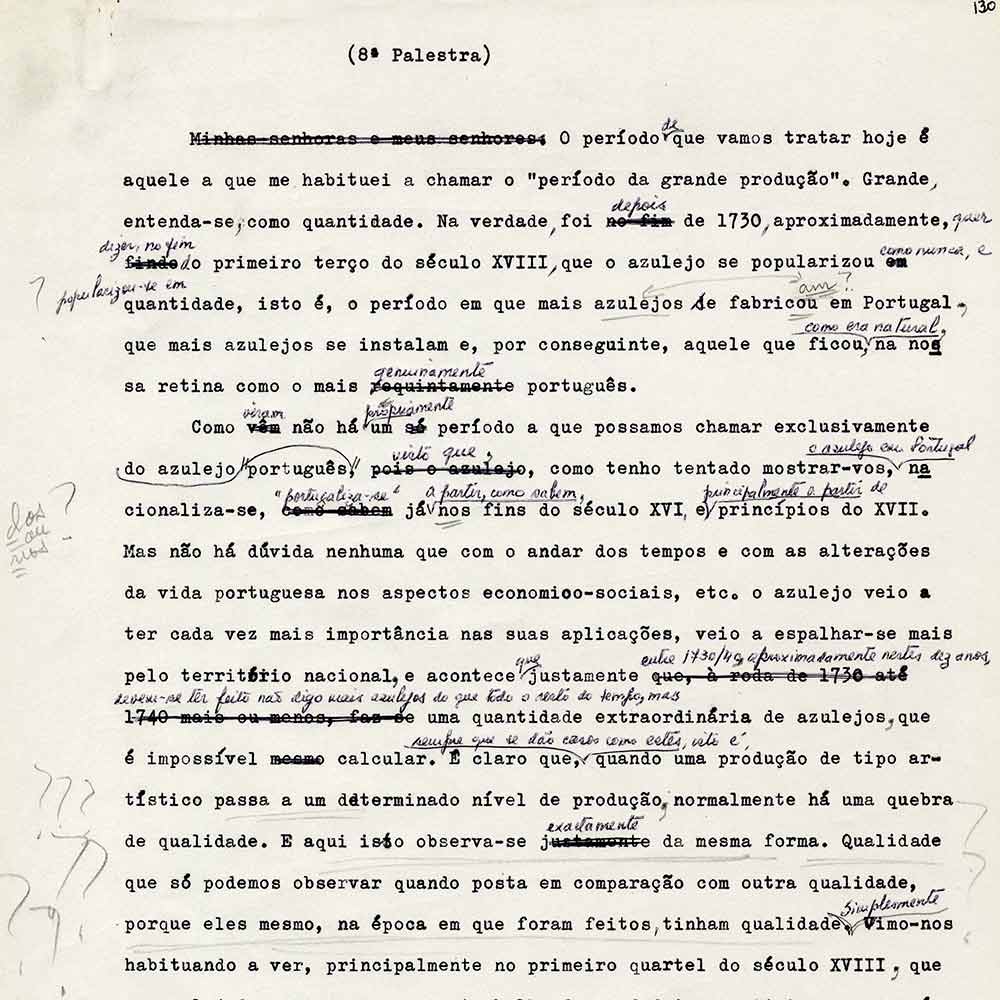

8. Eighth lecture, 05-03-1968
8. Eighth lecture, 05-03-1968
The time of the “great production” (1725 – 1755). Lisbon, Oporto, Coimbra and sporadic instances (Viana). The tile “D. João V”. Minor applications – single figure tiles, vases, “registers” […]
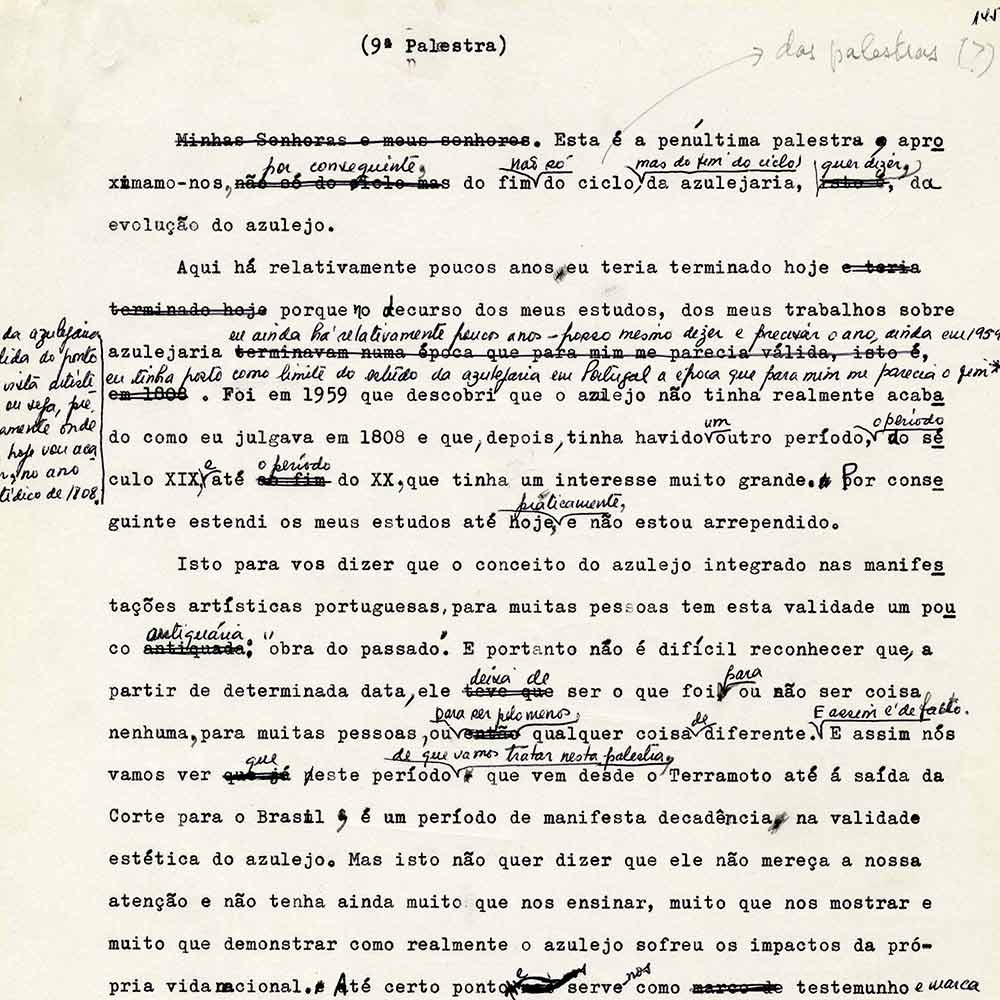

9. Ninth lecture, 12-03-1968
9. Ninth lecture, 12-03-1968
The Lisbon Earthquake and the tiles. The turning point of taste: new forms, new concepts, new techniques, new clients, new organisation. Rococo and Neoclassical. The Real Fábrica da Louça (commonly known as “Rato”) and its derivated factories.
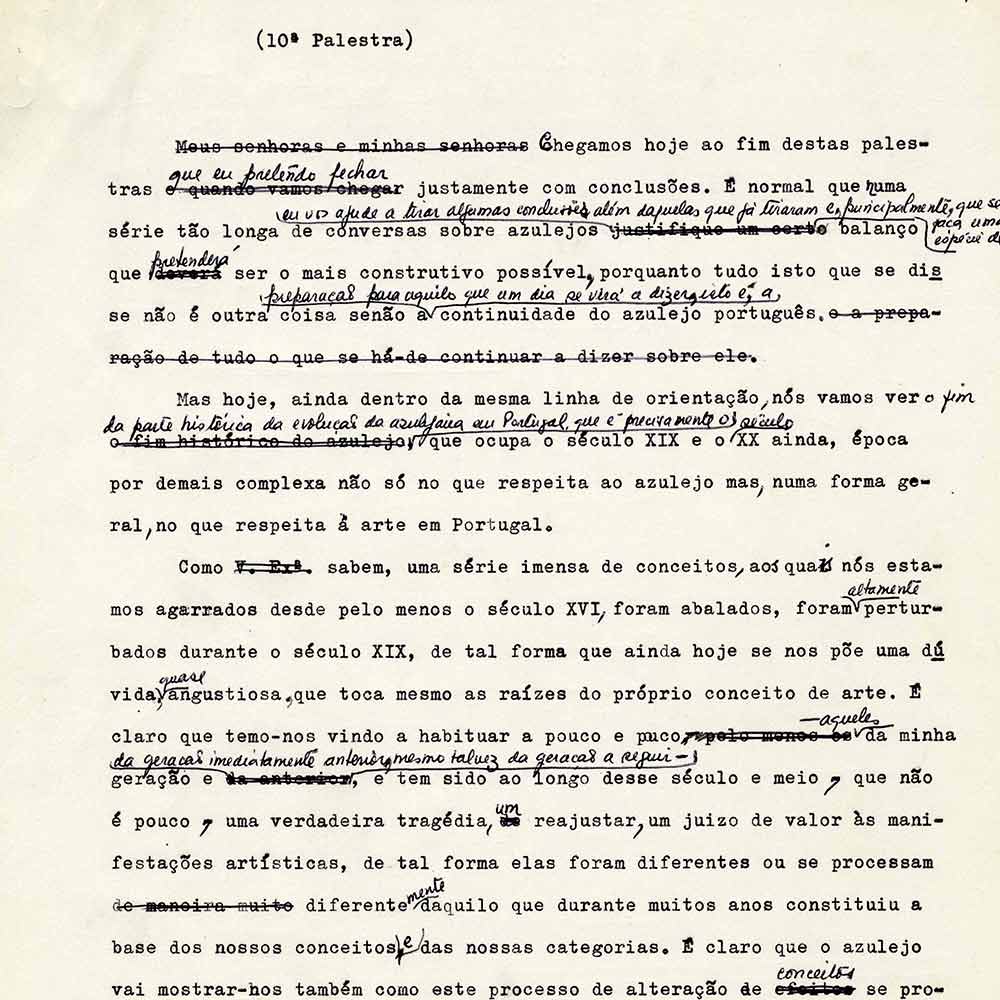

10. Tenth lecture, 19-03-1968
10. Tenth lecture, 19-03-1968
The decline of the azulejo (1790 – 1810). The “case” of Brazil and the “Brazilians” – tiles for façades. Industrialisation of the tile (1850 – 1900). The attempts at reunion: Luiz das Tabuletas, Pereira Cão, Jorge Colaço; the false traditionalism. The modern movements of integration of the tile in its decorative function. What has been done and what could be done.
All lectures are given in Portuguese.